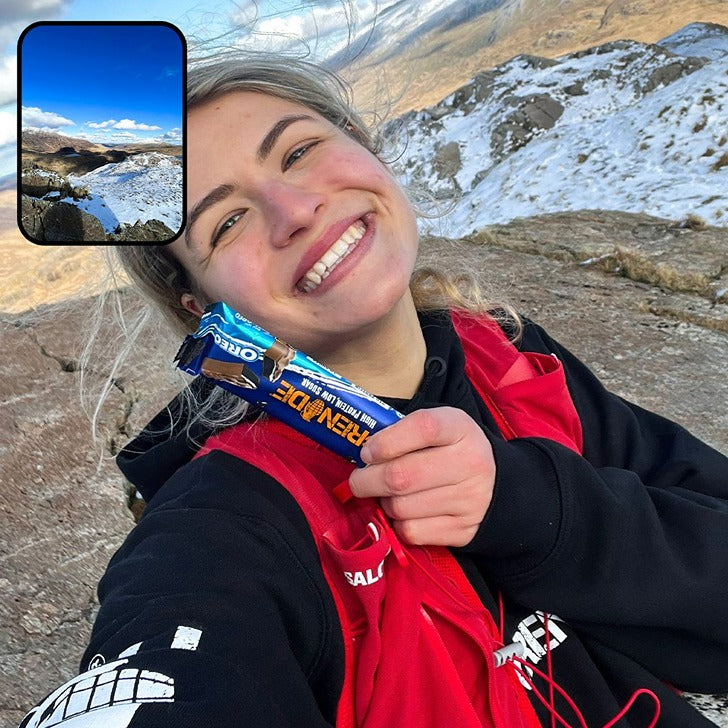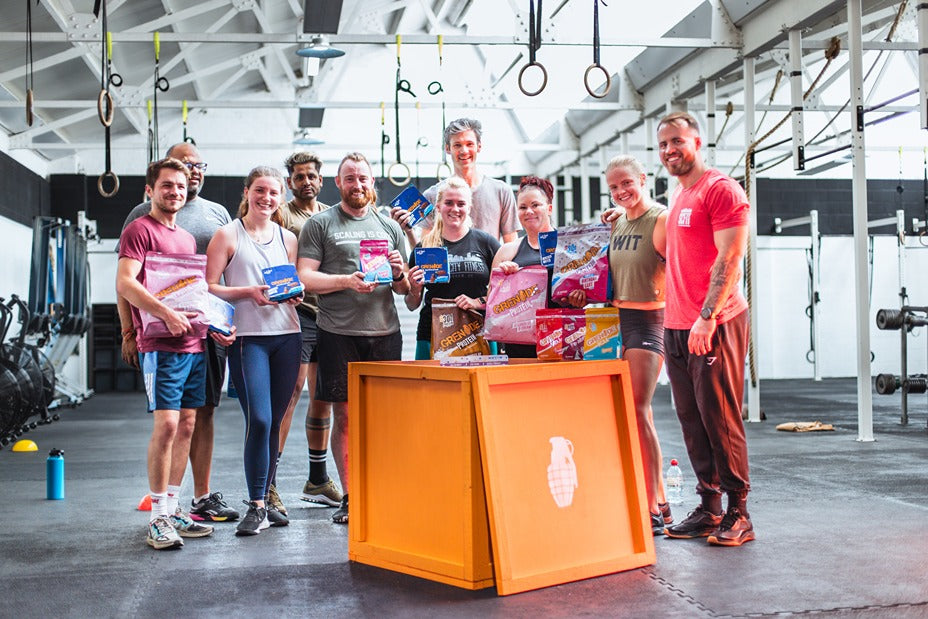training
Foam Rolling Benefits
Suffering from sore muscles? Maybe your mobility needs some work or you’re extra prone to injury. Whatever the issue, foam rolling may just be the answer to your problems. Keep reading to discover the benefits of foam rolling.
You may be familiar with the oddly shaped, slightly intimidating piece of equipment that is the foam roller. Perhaps you’ve given it a go but couldn’t see what all the fuss was about. Or maybe you’re a complete novice and have no idea where to begin.
We caught up with Team Grenade® ambassador and specialist osteopath Adam Whatley to find out more about the benefits of foam rolling and why it’s become so popular with runners, gym-goers and athletes alike.
WHAT IS FOAM ROLLING?
Foam rolling is a fantastic exercise, commonly used for self-muscle release. It is like a deep tissue massage for your muscles and is great for working into tight muscles that may be causing problems with joints and mobility. It is used for breaking down developed scar tissue within muscle and increasing blood into muscles.
Along with muscles, it also works into a soft tissue called fascia. Fascia is tissue that connects with your muscles together to provide support throughout your entire body. Fascia should be mobile as it is elastic and can stretch and move as one with the rest of your body. However, often due to increased exercise intensity, poor posture or movement patterns, stress and lifestyle factors, this fascia can tighten and become stiff, restricting movement and even causing pain.
WHAT ARE THE BENEFITS OF FOAM ROLLING?
It improves range of motion and mobility
Poor mobility is often the result of the muscles and fascia becoming shortened, causing muscular trigger points, also known as knots. Shortened muscles then obviously effect range of movement and mobility, whilst trigger points can often cause pain and muscular fatigue. Foam rolling can break up the developed scar tissue and trigger points, allowing these muscles to stretch further and develop back to normal, increasing range of motion.
It enhances muscular performance
With increased mobility and range of motion, your muscles can perform better in your workouts, allowing you to increase power and strength.
It relieves muscular soreness and speeds up recovery
Overuse, increased exercise intensity, injury and even inactivity can lead to muscular shortening and reduce mobility. Foam rolling allows built-up scar tissue in the muscles to be broken up, at the same time increasing blood in to your muscle, providing your muscles with more nutrients and more oxygen. It also eliminates the over production of lactic acid. This then results in your muscles feeling and performing a lot better.
It restores muscles and prevents injury
Foam rolling will stretch and lengthen your muscles at the same time as breaking down developed scar tissue. As the scar tissue is broken down, it allows your muscles to stretch further. Again, as mentioned before, this structure helps to restore full range of motion and allows your muscles to load and perform better during sport and exercise, which, in turn, will prevent injury.
It improves postural control and corrects muscle imbalances
Your body wants to be in natural equilibrium, a state of rest or balance, however, posture, gravity and external influences put strain on our muscular balances. Restoring mobility and aiding muscular function will naturally allow muscle imbalances to correct and restore. This is a beauty called postural reciprocal inhibition.
HOW DO YOU FOAM ROLL?
Find out how you can safely and effectively foam roll specific body parts. Please note, you need to perform the exercise on both sides of the body.
CHEST

1) Lay face down with the bottom of the foam roller angled away from you. Your arm should be extended out to the side over the foam roller and the foam roller should be halfway between your breast bone and shoulder
2) Lift your stomach and hips off the floor to press your weight into the foam roller, gradually applying pressure
3) Roll forward and backwards a few inches over your chest and your front shoulder muscles
LATS

1) Lie on your focused side with the foam roller just under your armpit, slightly towards your back. Your focused arm should be extended over the roller
2) Cross your top leg over your bottom leg, keeping the bottom leg straight for stability and pressure distribution
3) Press all of your weight into the foam roller and roll
MID BACK

1) Lay with the foam roller in the middle of your back across your shoulder blades
2) Place your arms across your chest, shift slightly to your focused side and lift your hips off the ground to put as much weight as possible onto your upper back
3) Roll from your shoulder blades down to the bottom of your rib cage and back up – do not roll directly on your spine
GLUTES/HIPS

1) Sit on top of the foam roller with your one ankle crossed over your opposite knee
2) Slightly shift your weight to the one glute to apply pressure
3) Roll forward and back slightly to release
QUADS

1) Lay face down, on your elbows, with the foam roller just beneath your hips and on your quads
2) Shift as much weight as possible onto the roller and slowly roll it down your legs to just above the knee
3) Roll back upwards
Top tip: Try rotating your legs to hit the inside and outside of your quad muscles.
IT-BAND

1) Lay on your side with the bottom focused leg placed onto the foam roller between the hip and the knee
2) Cross your other leg over and place the foot on the floor
3) Place as much weight as possible into the bottom leg and roll from the hip to just above the knee and back up
CALVES

1) Sit on the floor and place the foam roller under your focused lower leg, between the base of your calves and Achilles
2) Cross your other leg over your focused leg
3) Placing your hands on the ground to steady yourself, lift your hips up to apply pressure onto the foam roller
4) Slowly walk your hands towards the foam roller to roll it up your leg. Stop just below the knee and roll back down
Top Tips For Foam Rolling
- Slowly and specifically roll each targeted muscle for 1-2 minutes
- Try to hold tight spots for 30 seconds – any discomfort or tenderness will gradually ease
- Try to relax while foam rolling – this will reduce the possibility of cramps
- Never roll on a joint
- If an area is simply too painful to apply direct pressure, shift the roller and apply pressure on the surrounding area to gradually loosen the entire area
- After foam rolling, perform some gentle static stretches to promote further flexibility
For more training tips and advice from Adam Whatley, read his post on how to injury proof your joints. You can also visit our blog for more training content.





